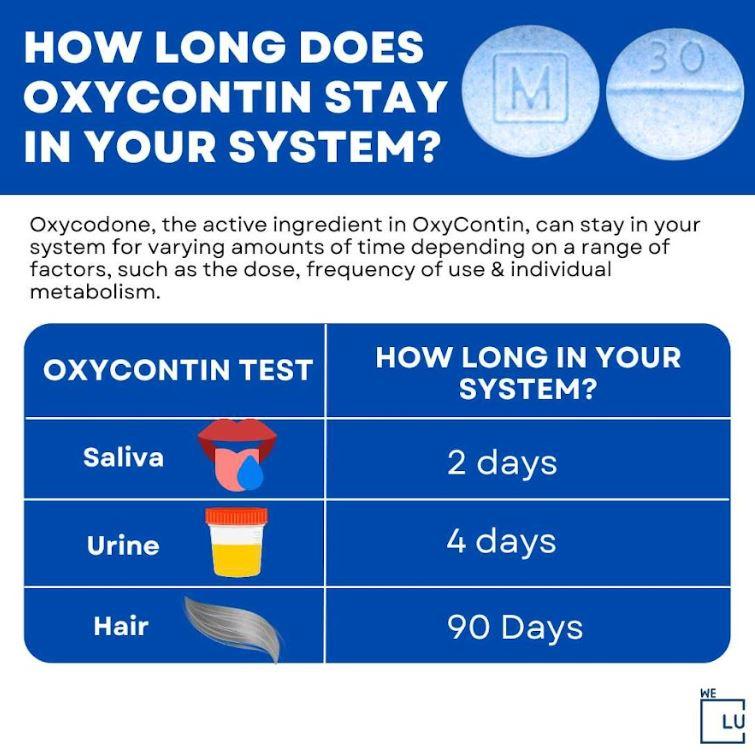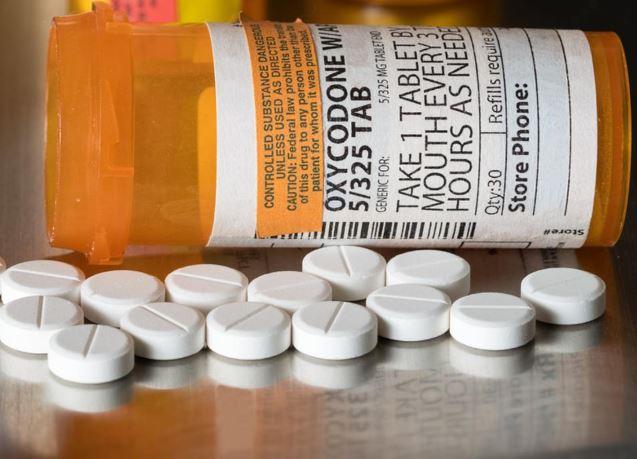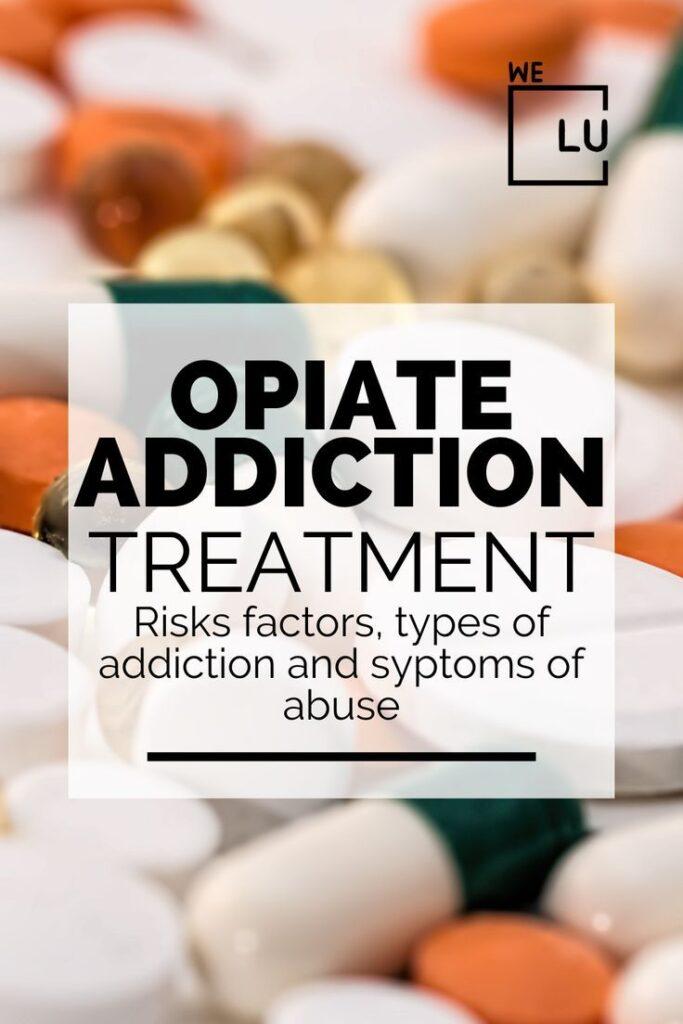Warnings About Snorting Oxycodone
As an opioid drug, oxycodone is only available for pain treatment with a prescription. Is oxycodone addictive? Yes, it is, and the addiction can also develop with prescription use. People who use the drug may quickly build up a tolerance. When a tolerance has been built, the drug dosage the person usually takes no longer has the desired effect. So the person using oxycodone will often have to keep taking more and more of the drug to feel high.
Oxycodone addiction can happen quickly. Once addiction sets in, the standard dosage is insufficient to achieve the desired effect when in pill form. As a result, higher doses of opioids are demanded. Tolerance negatively affects treatment regimens as well. The time-release mechanism is broken down if taken more often than prescribed, crushed up and snorted, or injected in liquid form. Abusing oxycodone using any of these methods dramatically increases the likelihood of developing an addiction.
Opioid addiction, including oxycodone abuse, is a severe and deadly health concern that can lead to fatal overdoses, respiratory depression, and other life-threatening complications. It is essential to recognize the signs of addiction, seek early intervention, and provide access to appropriate treatment and support to prevent tragic outcomes.
Why Do People Snort Oxycodone?
Oxycodone is a common opioid painkiller sold under OxyContin, among others. However, it can cause physical dependence and addiction. It is a narcotic for moderate to severe pain and is sometimes formulated with acetaminophen (Percocet) or aspirin (Percodan).
Oxycodone is abused orally or intravenously. The tablets are crushed, sniffed/snorted, or dissolved in water and injected. Others heat a tablet on a piece of foil and inhale the vapors. Oxycodone products are in Schedule II of the Controlled Substances Act, meaning they have medical use and a high potential for addiction.
Euphoria and feelings of relaxation are the most common effects of oxycodone on the brain, which explains its high potential for abuse.
Side Effects of Snorting OxyContin
Oxycodone has been used since its first synthesis in 1917 but was formally approved for use in the United States in 1991. Since then, it has become one of the most commonly prescribed drugs in medical practice.
Oxycodone is a controlled substance classified as Schedule II, indicating its medical usefulness and a high potential for physical and psychological dependency and abuse. Unfortunately, oxycodone has become one of the most frequently abused prescription medications, and some formulations can be snorted, dissolved, and injected intravenously.
Side effects of oxycodone include the following:
- Sedation.
- Respiratory depression.
- Mental clouding.
- Euphoria.
- Agitation.
- Itching.
- Constipation.
- Diarrhea.
- Abdominal bloating.
- Nausea.
- Vomiting.
- Headache.
- Dizziness.
Severe adverse events include:
- Life-threatening respiratory depression.
- Addiction and abuse.
- Opioid withdrawal.
- Serotonin syndrome (when used with serotonergic agents).
- Adrenal insufficiency.
Can you snort oxycodone? No, because it is unsafe. With oxycodone dependence, patients may turn to illegal opiate drug use. Ironically, in some communities, heroin is more available and less expensive than oxycodone by prescription.
Symptoms of Oxycodone Snorting and Addiction
Detecting if someone is snorting opioid medication may involve observing sure signs and behaviors, including:
- Frequent and excessive sniffing, rubbing, or touching of the nose.
- Presence of white powder residue around the nostrils or on personal belongings.
- Rapid and intense mood swings or changes in behavior.
- Increased isolation, secrecy, or withdrawal from social activities.
- Deterioration of nasal health, such as frequent nosebleeds, chronic congestion, or nasal infections.
- Decline in overall health, weight loss, and changes in physical appearance.
- Doctor shopping or obtaining multiple prescriptions from different healthcare providers.
How Long Does OxyContin Stay in Your System? Infographic
Embed the below “How long does OxyContin stay in your system?” Infographic to your website. To use the below We Level Up infographic, you agree to link back and attribute its source and owner at https://welevelup.com/addiction/snorting-oxycodone/
How long does OxyContin stay in your system? Infographic image link: https://welevelup.com/wp-content/uploads/2022/05/Snorting-Oxycodone.jpg

Skip To:
Learn More:
- How Long Does Oxycodone Stay in Your System & Blood?
- How Long Does Oxycodone Stay in Urine?
- Oxycodone Withdrawal Symptoms, Timeline & Treatment
- Yellow Percocet. Perc 10 Imprint Pictures, Percocet Yellow Oxycodone-Acetaminophen Side Effects, Uses, & Dose.
- What Is Oxycodone? Side Effects, Interactions & Drug Abuse
- Can You Shoot Oxycodone?
- The Dangers Of Mixing Alcohol And Oxycodone
- Can You Smoke Oxycodone?
- The Effects & Dangers Of Xanax And Oxycodone
- Snorting Percocet Addiction Side Effects & Potential Dangers
If you suspect someone is misusing or abusing opioid medication, it is crucial to encourage them to seek professional help and support from healthcare professionals or addiction specialists.
Oxycodone Snorting Effects Drug Fact Sheet
How To Snort Oxycodone? Identifying Drug Addiction
How to snort OxyContin? When crushed and snorted, the maximum concentration is between 52 and 65 minutes. It means that the health effects of the total dosage will hit the individual more intensely. Snorting oxycodone has several health consequences. You can damage your respiratory system, making it difficult for you to breathe normally.
Moreover, the nasal membranes are incredibly delicate and can be easily damaged. As these get damaged, they usually stop working, affecting respiratory actions.
What Happens If You Snort Oxycodone?
It is crucial to use medications as prescribed by a healthcare professional and avoid misusing or abusing opioids to ensure safety and overall well-being. If you or someone you care about is struggling with oxycodone addiction, seek help from healthcare professionals or addiction support services.
If someone snorts oxycodone, the following may happen:
- Rapid and intense absorption: Snorting oxycodone allows the drug to be quickly absorbed through the nasal tissues, leading to a faster onset of effects.
- Increased risk of overdose: Snorting oxycodone can result in higher drug concentrations in the bloodstream, raising the chances of an overdose and potentially life-threatening respiratory depression.
- Nasal damage: Frequent snorting can cause damage to the nasal passages, leading to irritation, inflammation, and potential long-term harm.
- Shortened duration of effects: While the initial effects may be intense, snorting oxycodone can also lead to a shorter duration of pain relief than other administration methods.
- Increased potential for addiction: The rapid onset of euphoria can reinforce drug-seeking behaviors, leading to a higher risk of developing opioid addiction.
- Cardiovascular problems: Snorting oxycodone can stress the cardiovascular system, leading to increased heart rate, blood pressure, and potential cardiac issues.
- Increased risk of infectious diseases: Sharing snorting equipment may expose individuals to contracting infectious diseases like HIV or hepatitis.
- Social and psychological consequences: Misusing and snorting oxycodone can lead to strained relationships, financial difficulties, and psychological issues.

Get Your Life Back
Find Hope & Recovery. Get Safe Comfortable Detox, Addiction Rehab & Dual Diagnosis High-Quality Care.
Hotline(844) 597-1011Oxycodone Statistics
The highly addictive nature of oxycodone and other opioids has created an epidemic of opioid overdoses and deaths across the US.
50,000
In 2019, nearly 50,000 people in the US died from opioid overdoses.
Source: CDC
1,000
The CDC currently estimates more than 1000 emergency department visits daily related to the misuse of opioids.
Source: CDC
91
About 91 opioid overdose deaths happen every day.
Source: CDC
Can OxyContin Be Snorted?
When you snort this opioid pain medication, you have an unregulated amount of OxyContin. Because your body is trying to compensate for such high doses of oxycodone, you run a significant risk of overdose and potential death.
What happens if you snort OxyContin? The problem with snorting OxyContin is that the nose is not evolved to process many particles, and the mucous membrane wears down over time. Perforation of the nasal septum (the bridge that holds up the nose physically), nose bleeds, chest infections, and inflammation may result. Some individuals go on to lose their sense of smell, and even the nose itself can eventually collapse.

Get Help. Get Better. Get Your Life Back.
Searching for Accredited Drug and Alcohol Rehab Centers Near You?
Even if you have failed previously and relapsed, or are in the middle of a difficult crisis, we stand ready to support you. Our trusted behavioral health specialists will not give up on you. When you feel ready or just want someone to speak to about therapy alternatives to change your life call us. Even if we cannot assist you, we will lead you to wherever you can get support. There is no obligation. Call our hotline today.
(844) 597-1011Oxycodone Abuse Symptoms
Common prescription drugs used for pain treatment, such as Percodan, Percocet, Roxicet, and OxyContin, now contain varying levels of oxycodone. Individuals who abuse these drugs crush them into powder form and snort through the nose. This mode of administration is also referred to as nasal insufflation.
Can I snort oxycodone? No. Snorting oxycodone increases the risk of addiction since crushing and snorting oxycodone elicits more heightened effects and an intensely rewarding sensation that reinforces continued use.
Signs that an individual is addicted to oxycodone may include:
- Unsuccessfully trying to cut down.
- Taking more significant amounts of oxycodone over time.
- Craving oxycodone.
- Spending a long time acquiring, handling, or recovering from oxycodone.
- Using oxy in hazardous situations.
- Inability to carry out obligations at home, work, or school.
- Continuing to use oxy despite relationship problems.
- Suffering from withdrawal symptoms in the absence of oxycodone.
- Needing more significant amounts of oxy to achieve the desired effects.
- Continuing to opioid use despite physical or psychological problems.
- Giving up once-important activities in favor of obtaining and using oxycodone.
Other signs you may have noticed in a loved one who is snorting oxycodone include:
- Nasal problems or damage.
- Frequent sniffling.
- Possession of drug paraphernalia like straws and empty prescription bottles.
Admitting that you or a loved one is suffering from oxycodone addiction can be difficult. Fortunately, treatment and intervention programs and recovery groups are available to help.
Oxycodone Overdose Symptoms
Overdose is an immediate risk for anyone snorting oxycodone. Taking more than the intended dose of oxycodone even once can result in severe respiratory depression, where breathing slows down or stops altogether.
Symptoms of an oxycodone overdose include:
- Markedly constricted pupils.
- Stomach spasms.
- Bluish tint to the fingernails and lips.
- Uncontrollable vomiting.
- Severe respiratory depression or complete inability to breathe.
- Seizure.
- Dangerously low blood pressure and decreased pulse rate.
- Extreme drowsiness and loss of consciousness.
- Coma.
You are more likely to overdose on oxycodone if you:
- Snort the drug or take it in ways different from what is prescribed.
- Take more of the drug than prescribed.
- Mix the medication with alcohol or other sedatives.
If someone is experiencing an oxycodone overdose, it is crucial to seek medical attention immediately to prevent potentially fatal respiratory depression and other severe complications.
Calling emergency services (911) can be life-saving in such situations.
First-class Facilities & Amenities
World-class High-Quality Addiction & Mental Health Rehabilitation Treatment
Rehab Centers TourRenowned Addiction Centers. Serene Private Facilities. Inpatient rehab programs vary.
Addiction Helpline(844) 597-1011Proven recovery success experience, backed by a Team w/ History of:
15+
Years of Unified Experience
100s
5-Star Reviews Across Our Centers
10K
Recovery Success Stories Across Our Network
- Low Patient to Therapist Ratio
- Onsite Medical Detox Center
- Comprehensive Dual-Diagnosis Treatment
- Complimentary Family & Alumni Programs
- Coaching, Recovery & Personal Development Events

Getting Help For Oxycodone Abuse
Suppose you think a loved one snorts oxycodone. In that case, you should first research the drug and associated addiction to better understand what your loved one needs. Next, you must plan an intervention to provide your loved ones with options to battle their addiction in a safe and supportive environment. During this intervention, make sure that you offer compassion and support instead of judgment. Lastly, show your support throughout the entire treatment process.
Prolonged oxycodone abuse can have severe physical and psychological effects, so seeking treatment as soon as possible is essential. Inpatient drug rehab offers intensive care that can help you promptly get through the early stages of opioid withdrawal.
The We Level Up addiction treatment center understands the impact of the opioid crisis and continues to help individuals and families reclaim their lives from opioid use disorders. Contact us today to get started, learn more resources, and understand your case to get proper treatment.
World-class, Accredited, 5-Star Reviewed, Effective Addiction & Mental Health Programs. Complete Behavioral Health Inpatient Rehab, Detox plus Co-occuring Disorders Therapy.
CALL(844) 597-1011End the Addiction Pain. End the Emotional Rollercoaster. Get Your Life Back. Start Drug, Alcohol & Dual Diagnosis Mental Health Treatment Now. Get Free No-obligation Guidance by Substance Abuse Specialists Who Understand Addiction & Mental Health Recovery & Know How to Help.
Top 3 OxyContin Snorting FAQs
-
Do people snort OxyContin?
Yes, some individuals may snort OxyContin, which is an extended-release form of oxycodone, in an attempt to achieve a more rapid and intense high. However, this practice is harmful and can lead to severe health consequences, including damage to the nasal passages, respiratory problems, and an increased risk of overdose.
-
How to snort new OxyContin?
Snorting OxyContin or any other medication is unsafe and illegal. If you or someone you care about is struggling with substance abuse, please seek help from a healthcare professional or a support organization to address the issue appropriately and safely.
-
What happens when you snort oxycodone?
When you snort oxycodone, the drug is rapidly absorbed through the mucous membranes in the nasal passages, leading to a faster onset of effects. However, snorting oxycodone can cause damage to the nasal tissues, increase the risk of overdose, and cause further health problems. Using medications as a healthcare professional prescribes to ensure safe and effective treatment is essential.
How Long Do Opiates Stay in Your System? How Long Do Opiates Stay in Urine, Blood, & Body?
Snorting oxycodone can affect how long it stays in the system. When oxycodone is snorted, it is rapidly absorbed into the bloodstream, leading to a faster onset of effects and a shorter duration of action compared to other administration methods.
Consequently, the drug may be eliminated from the body more quickly. However, its overall presence in the system can still be detected through drug tests, depending on the specific test type and sensitivity.
Learn more about how long opiates stay in your system by watching the video below.
If you or a loved one is struggling with oxycodone addiction or other substance use disorder(s), call for a FREE consultation 24/7 at (561) 678-0917
Get FREE addiction treatment insurance check – https://welevelup.com/rehab-insurance/
How Long Do Opiates Stay in Your System? Video Transcript.
Welcome to the We Level Up treatment center video series. In today’s video, we will discuss How Long Do Opiates Stay in Your System? How Long Do Opiates Stay in Urine, Blood, & Body? Learn the Hydrocodone, Oxycodone, & Codeine Drug Testing Facts.
The length of time that opiates remain in your system varies depending on the type of opiate, the dosage, and the frequency of use. Generally, opiates can stay in your system for two to four days. However, heavier and chronic users may have residues for up to seven days.
Opiates can be detected in the blood test for up to 24 hours and the urine test for up to three days. Opiates can be detected in the hair follicles for up to 90 days. In chronic users, opiates can stay in the body for up to 30 days.
Opiates often have short half-lives, meaning their effects can linger for several hours even though they swiftly leave the body. However, Opioids can linger in a person’s bloodstream for several hours or days after the symptoms subside, depending on the substance used. Urine tests, one of the more common types of drug testing, can identify opioid usage for extended periods, often up to three to four days, and some tests can identify opioid use for up to three months.
Drugs in the opioid class are used to treat pain. Natural opioids, semi-synthetic opioids generated from natural opioids, and synthetic opioids produced in a lab are all referred to as opioids under the general term. A class of medications known as opioids contain opiates, which are organic byproducts of the poppy plant.
The main difference is that “opiate” refers to the substances derived from the opium (poppy) plant. At the same time, “opioids” are all substances that interact with opioid receptors, including those created in the lab.
What are Opioids?
Opioids, sometimes called narcotics, are medications doctors prescribe to treat persistent or severe pain. They are used by those with persistent headaches and blood alcohol levels, those recovering from surgery or dealing with excruciating pain from cancer, as well as by adults and kids who have suffered significant injuries while playing sports or in falls, car accidents, or other situations.
A large class of painkillers known as opioids interact with opioid receptors in your cells to relieve pain. Opioids can be produced in a lab, such as fentanyl, or from the poppy plant such as morphine, Kadian, Ms. Contin, Actiq, Duragesic, and others.
Your brain cells release signals that reduce your sense of pain and increase your emotions of pleasure when opioid drugs pass through your blood and bind to opioid receptors. Opioid addiction can happen after just a week of use. The risk for long-term opioid abuse increases after only five days of taking medicine. Some individuals who only intended to use opioids for a week have continued to do so a year later.
Opiates Drugs Names
There are a variety of opiate drugs, all with different names. Some examples include codeine, morphine, oxycodone, hydrocodone, fentanyl, and methadone. It is essential to know the names of opiates when seeking help for addiction, as intervention strategies and treatment plans may depend on the specific opiates being abused.
The top three opiate drugs most commonly prescribed are Hydrocodone, Oxycodone, and Codeine. Other opiate drugs may also be prescribed, depending on your needs and doctor’s advice.
Experience Transformative Recovery at We Level Up Treatment Centers.
See our authentic success stories. Get inspired. Get the help you deserve.
Start a New Life
Begin with a free call to an addiction & behavioral health treatment advisor. Learn more about our dual-diagnosis programs. The We Level Up Treatment Center Network delivers recovery programs that vary by each treatment facility. Call to learn more.
- Personalized Care
- Caring Accountable Staff
- World-class Amenities
- Licensed & Accredited
- Renowned w/ 100s 5-Star Reviews
We’ll Call You
Search We Level Up The Dangers Of Snorting Oxycodone, Mental Health Topics & Resources
Sources
[1] National Institute On Drug Abuse. (2020). Opioids Trends & Statistics. Learn More About What is Oxycodone.
[2] Centers for Disease Control and Prevention – Learn More About What is Oxycodone? – Prescription Opioid and Benzodiazepine Medications and Occupational Safety and health information for Employers and Healthcare Providers.
[3] Food and Drug Administration – What is Oxycodone Hydrochloride? OxyContin (Oxycodone Hydrochloride)
[4] What is Oxycodone and Opioid Addiction – MedlinePlus Genetics Available from: https://medlineplus.gov/genetics/condition/opioid-addiction/
[5] Azadfard M, Huecker MR, Leaming JM. Opioid Addiction. [Updated 2023 Jan 1]. In: StatPearls [Internet]. Treasure Island (FL): StatPearls Publishing; 2023 Jan-. Available from: https://www.ncbi.nlm.nih.gov/books/NBK448203/ Learn More About What is Oxycodone?
[6] Dydyk AM, Jain NK, Gupta M. What is Oxycodone? Opioid Use Disorder. [Updated 2022 Jun 21]. In: StatPearls [Internet]. Treasure Island (FL): StatPearls Publishing; 2023 Jan-. Available from: https://www.ncbi.nlm.nih.gov/books/NBK553166/
[7] Sadiq NM, Dice TJ, Mead T. What is Oxycodone? [Updated 2022 Aug 22]. In: StatPearls [Internet]. Treasure Island (FL): StatPearls Publishing; 2023 Jan-. Available from: https://www.ncbi.nlm.nih.gov/books/NBK482226/
[8] What is Oxycodone Hydrochloride? OxyContin Diversion and Abuse – National Drug Intelligence Center
[9] Ordóñez Gallego A, González Barón M, Espinosa Arranz E. What is Oxycodone: a pharmacological and clinical review. Clin Transl Oncol. 2007 May;9(5):298-307. DOI: 10.1007/s12094-007-0057-9. PMID: 17525040.
[10] National Academies of Sciences, Engineering, and Medicine; Health and Medicine Division; Board on Health Sciences Policy; Committee on Pain Management and Regulatory Strategies to Address Prescription Opioid Abuse; Phillips JK, Ford MA, Bonnie RJ, editors. Pain Management and the Opioid Epidemic: Balancing Societal and Individual Benefits and Risks of Prescription Opioid Use. Washington (DC): National Academies Press (US); 2017 Jul 13. 5, Evidence on Strategies for Addressing the Opioid Epidemic. Available from: https://www.ncbi.nlm.nih.gov/books/NBK458653/ Learn More About What is Oxycodone.



